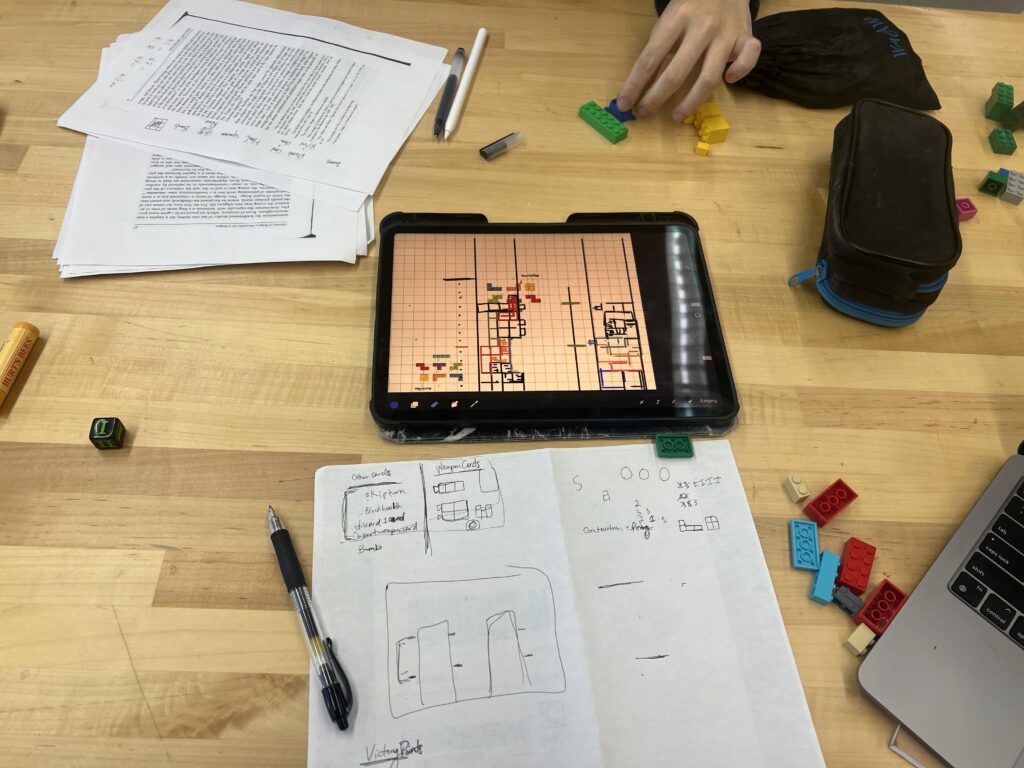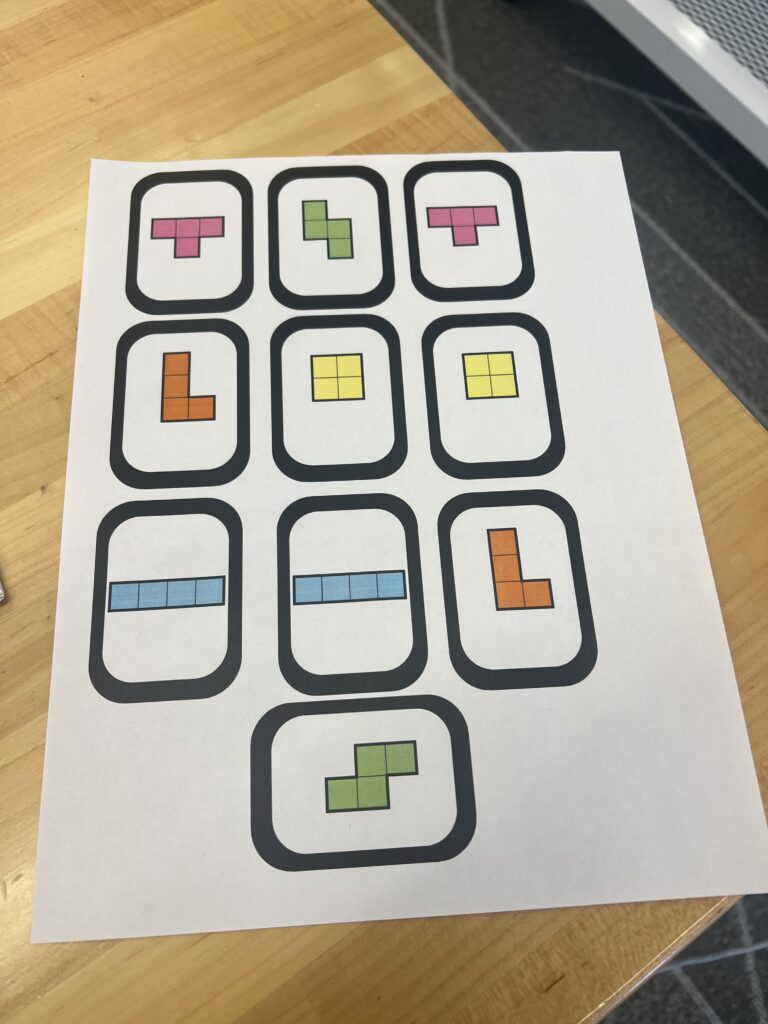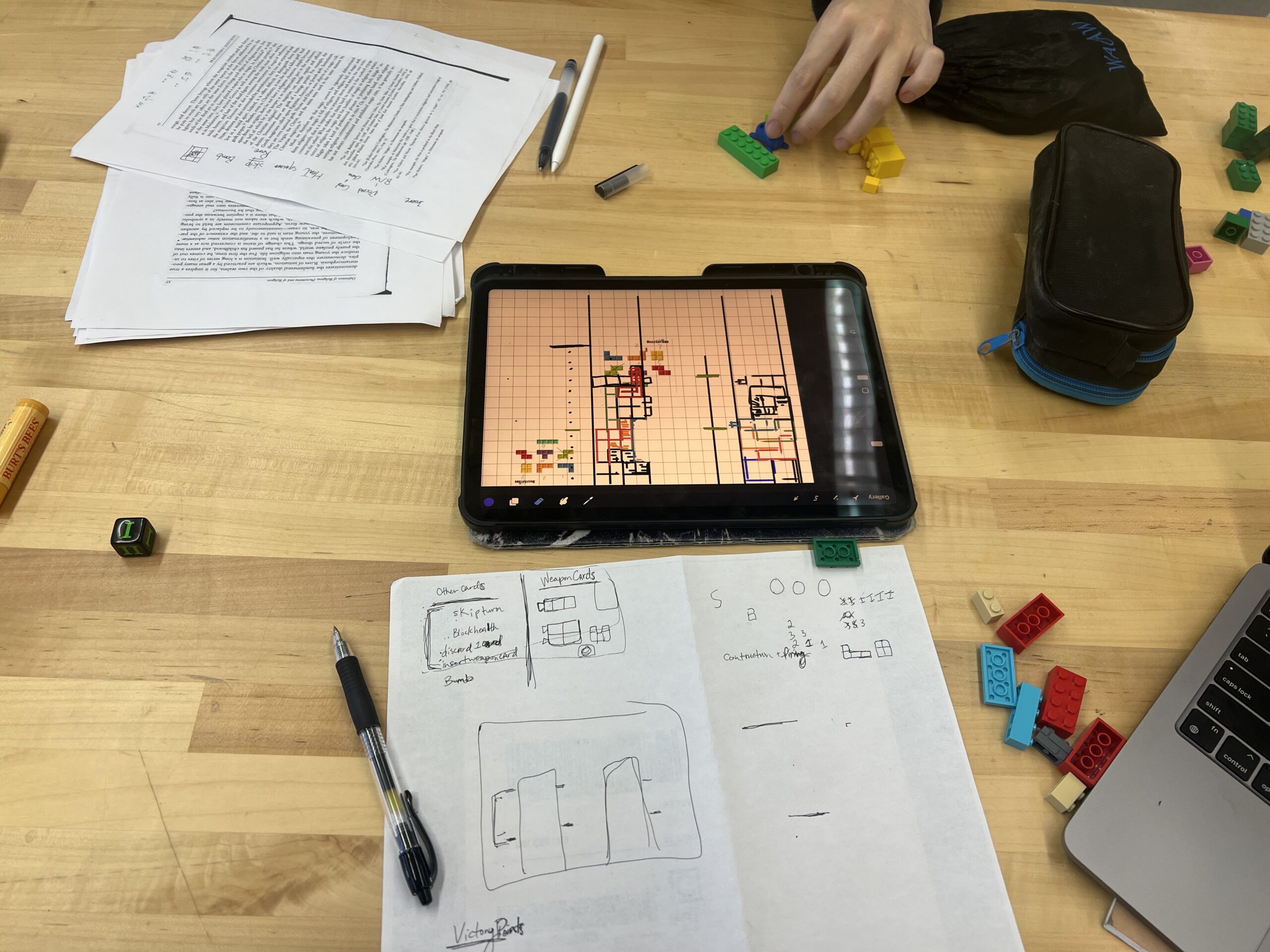The Inception
Yicheng came into our first meeting with the idea of making a social card game that would be based loosely on Tetris. Honestly, this has been a great learning experience, as the only social card games I have ever played that don’t involve a “traditional” deck of cards are Cards Against Humanity and Exploding Kittens, and I don’t remember anything about the latter of the two besides disliking playing it.
We decided that players would have two main objectives:
1. Build your tower as tall as possible
2. Destroy your opponent’s tower
The winning player will be the one with the tallest tower at the end of the game. We also chose to start with the idea that our game would be for 2 players. The primary building blocks that players will have the opportunity to use when building their tower are 6 types of tetris blocks, and there are also weapons that can be used to destroy the building blocks your opponent places to build their tower.

Playtesting
We started playtesting almost immediately, using procreate on an IPad to draw the blocks and weapons we placed, and we assigned numbers to building blocks and rolled D6s to deal ourselves our starting hand of 5 building blocks. We came up with a few weapons for attacking the other player’s tower, but the rest of the special cards were a later addition. Playtesting so early on in the process was definitely the best thing we could have done. It helped us figure out issues with our idea much quicker than we would have been able to otherwise.
The first issue we ran into regarding that destroy/attack part of the game was that it seemed to be more suited for digital, since it would be difficult for players to readjust their entire tower everytime a level of their tower is destroyed. To remedy this issue, we decided to add damage tokens to the game that would mark the damaged units of blocks as they are fired on using special cards. We also realized that players would need a chance to build at least the base of their tower before it is possible to destroy one another’s towers, which is where the idea for different stages or landmarks of the game came from. We decided to mix in the weapon cards with the rest of the special cards, and we came up with 3 “building checkpoints” located at 5 units, 8 units, and 10 units high on our hypothetical gridded board.
At each of these checkpoints, both players draw 5 building cards. Players also draw 2 special cards at the 5 unit checkpoint, 3 special cards at the 8 unit checkpoint, and 5 special cards at the 10 unit checkpoint. The game ends when either of the two players runs out of cards after the 10 unit checkpoint. At that point, each player should count the number of floors they have built their tower up to (4 block units = 1 floor). Players cannot count damaged block units, which will have been marked by the gray damage pieces throughout the game as they were attacked.

Players may play only one card during their turn. An exception to this that we realized we needed so as not to render the card redundant is if the player plays a “skip turn” card. In this case, that player will be allowed to play an additional card, skipping their opponent’s turn, which also means their opponent and any weapons they have played cannot deal damage for their turn that has been skipped. In addition to having weapons, we realized that some form of defense card would be relevant, so we added the shield card to the special deck. There are 6 types of blocks in the build deck, and for the special deck, we have 2 weapons types and 6 other types of special cards (block health, skip your opponent’s next turn, bomb, reshuffle both players’ hands, draw 2 special cards or 3 building cards, and insert a weapon). We decided based on the playtesting we conducted that 60 building cards and 3 of each special type card would be sufficient.
Another issue we ran into was the need for a grid or some kind of measuring system for the checkpoint and building heights. We decided that we would make a base for the towers and another side with the checkpoints and tower height measurements on the side out of paper, since it is a prototype. We may have more work to do in order to perfect our game, but even while playtesting we actually had fun, and hopefully everyone who plays it feels the same!
– Emma + Yicheng
